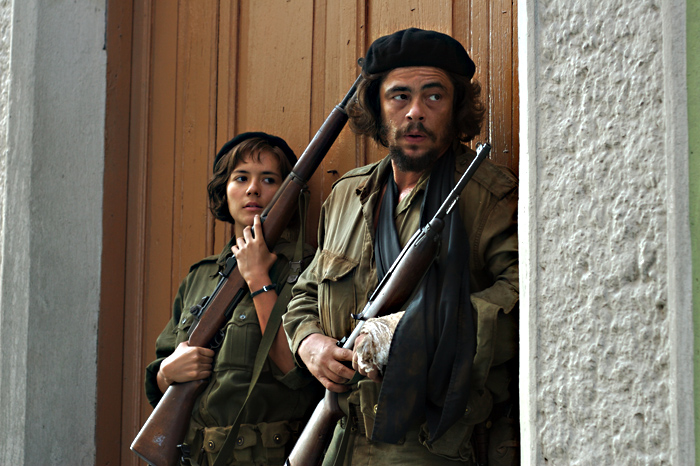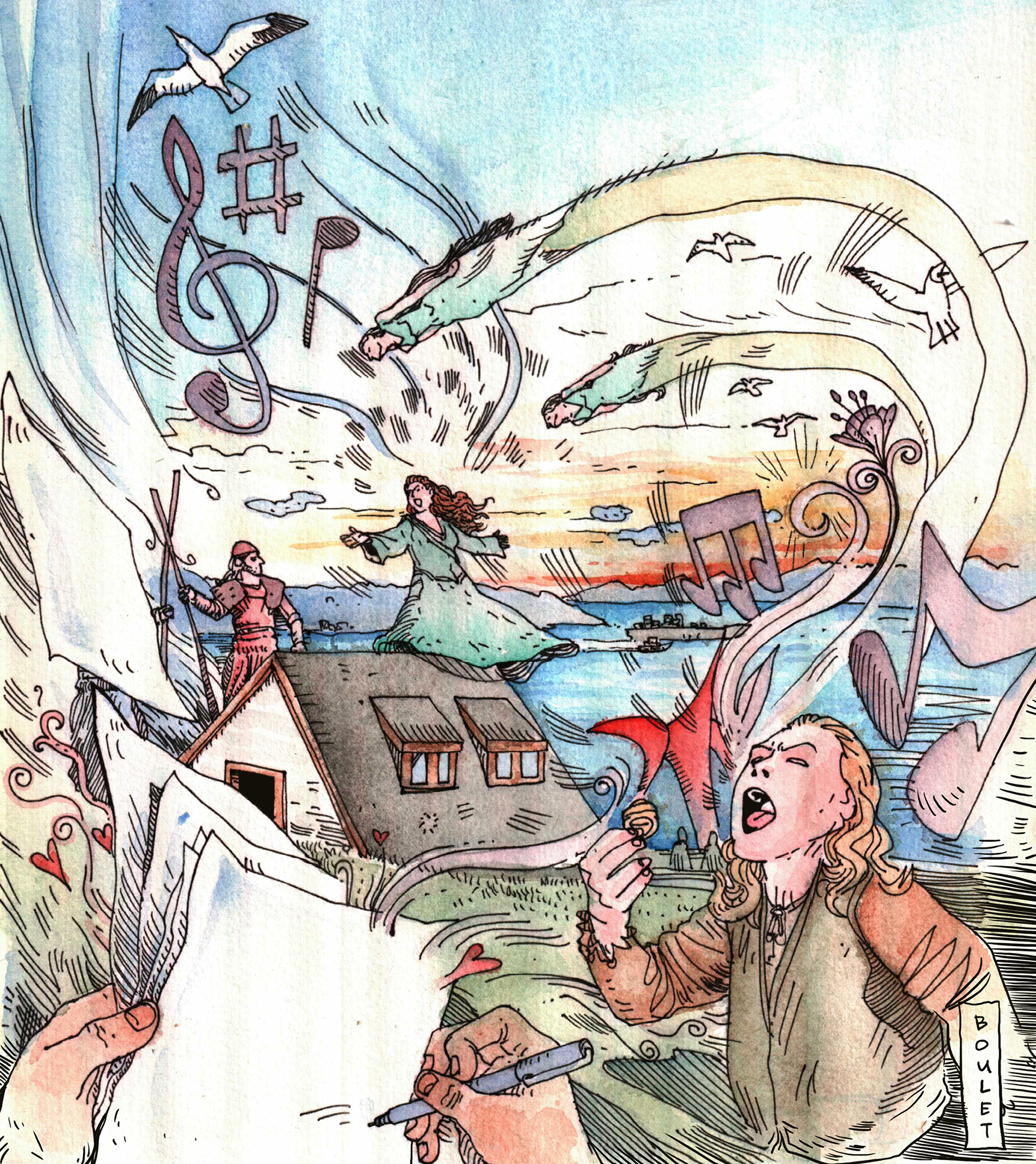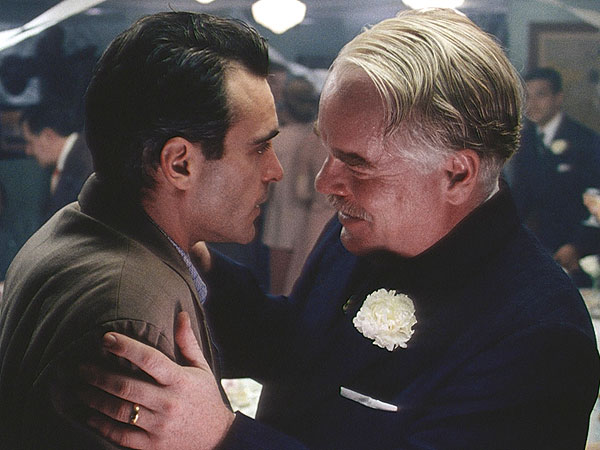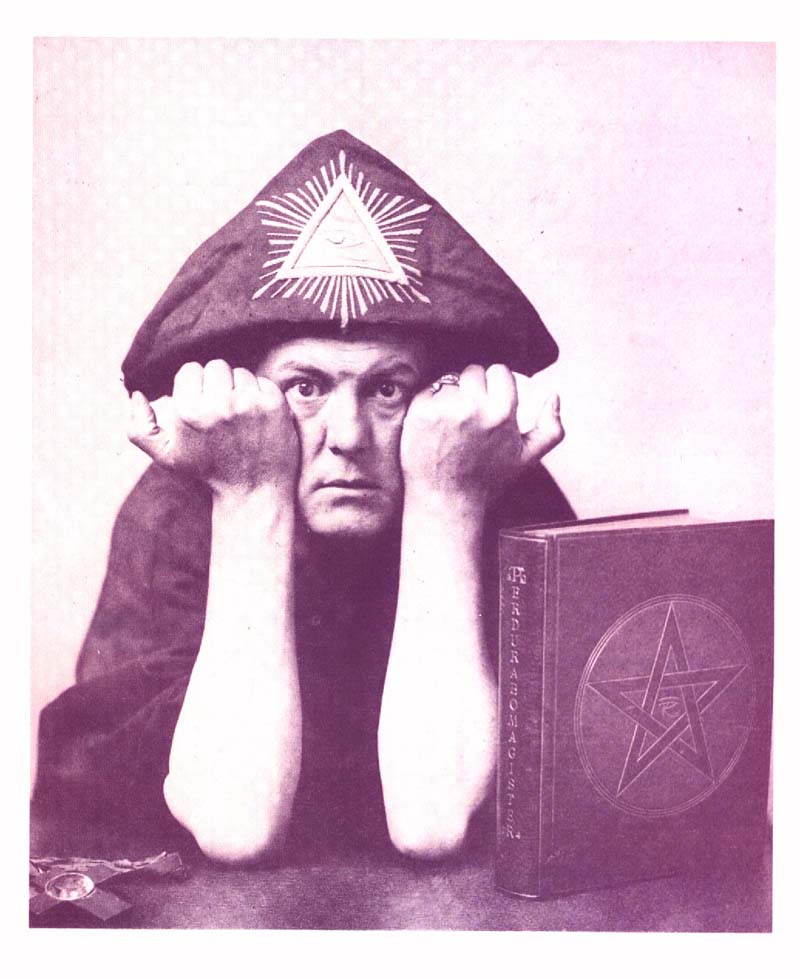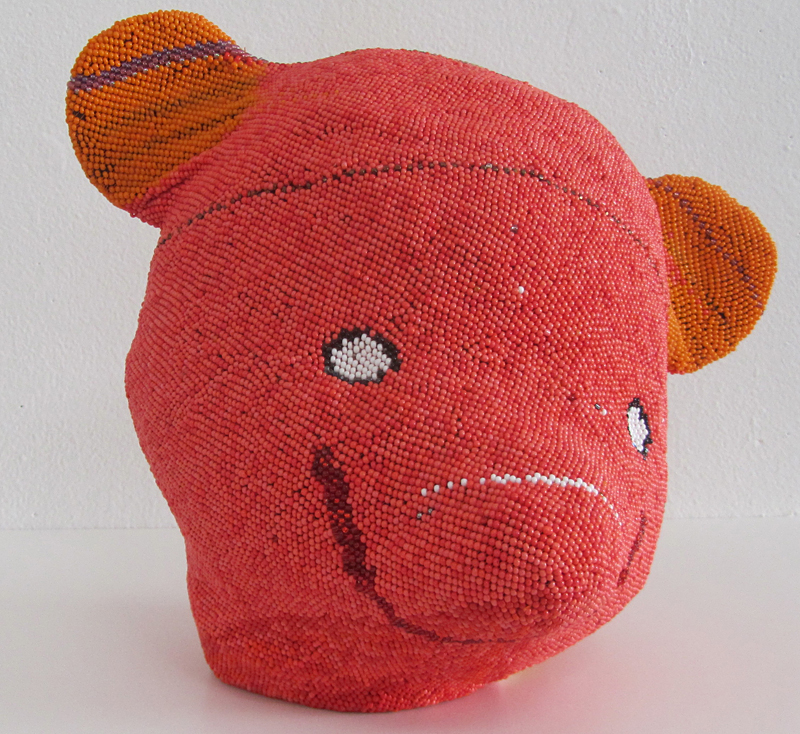Is it a sign of the apocalypse? Something in the water? Or is it just the way the wind is blowing? Whatever the case, when our often-contentious quintet of film critics put their heads together about the best movies of 2008, they managed to agree (more or less) on a dozen they felt were deserving of that designation. What’s more, two of those films–The Dark Knight and Wall-E—also happen to rank among the year’s five highest-grossing releases (with The Dark Knight, as of this writing, the second highest-grossing film ever released in the U.S.), taking the wind out of that tiresome old argument that says the tastes of critics and those of the average moviegoer are permanently out of alignment. Does that mean Hollywood is getting better, or Indiewood merely worse? Discuss among yourselves on your way to a night at one of these movies:
Che Steven Soderbergh’s superlatively crafted, dramatically compelling, emotionally distant account of Che Guevara’s participation in the Cuban Revolution of the 1950s and the disastrous Bolivian uprising a decade later is an anti-biopic that seeks to humanize its subject with a shocking absence of human interest. History is not personalized. Opening January 16, Che is both action film and ongoing argument. The two parts are best seen together: The second may be more realized, but its tragic futility is only comprehensible in the light of what has come before. J. HOBERMAN
A Christmas Tale A family of labile French hobgoblins bound together by one of the cheesiest movie metaphors—bad blood—and stewing volubly over old wounds goes home for the holidays and squabbles over who’s going to save Catherine Deneuve. Writer-director Arnaud Desplechin wraps their brief encounters and power struggles in an armory of cinematic tricks and literary allusions and turns them into a wonderfully fractured, endlessly self-renewing prose poem on the mysteries of domestic life. ELLA TAYLOR
The Dark Knight It was a dark pleasure indeed to return to Christopher Nolan’s Gotham City in this hugely ambitious continuation of Nolan’s already-impressive 2005 Batman Begins—think of it as The Godfather: Part II of comic-book movies. As the anarchic Joker, the late Heath Ledger proved to be the freakishly disturbing highlight of a very good show, in which Nolan once again explored the themes that have attended his work since Memento—memory, obsessive desire, and the dual nature of man. By the end, our winged protagonist is no longer sure whether he is the hero or the villain of his own story—and neither, for that matter, are we. SCOTT FOUNDAS
Milk As conventional as biopics get: uplift and tragedy, upper as downer. But this one’s more heartfelt than most, as screenwriter Dustin Lance Black—who rescued Harvey Milk’s story from Hollywood’s give-up pile—has amassed what amounts to an oral history re-enacted by a cast that honors the late San Francisco supervisor’s legacy as barrier-buster; no mere martyr he, not here. But without Sean Penn—who makes Milk’s mannerism quirks his own without reducing them to impression or, even worse, “interpretation”—the movie wouldn’t work; all alone, he renders the potentially pedestrian absolutely profound. ROBERT WILONSKY
Paranoid Park Not since Springsteen in The Rising has an artist used pop so consciously (or urgently) as public address as Gus Van Sant does in Milk. By comparison, this little-seen vision of childhood’s end is the triumphant culmination of Van Sant’s apprenticeship in noncommercial cinema: It gathers all those experiments in looped chronology, sinuous long takes, and meandering with intent into gorgeous, artfully scattered fragments of a skater boy’s doomed now-is-forever youth. JIM RIDLEY
Silent Light To date, Mexican director Carlos Reygadas’ astoundingly beautiful, Dreyer-influenced drama of marital and spiritual crisis, set in a modern-day Mennonite community on the outskirts of Chihuahua, has played the festival circuit extensively but received only one regular, week-long booking at the Museum of Modern Art in New York. But starting in January, it will begin making its way toward an art house closer to you, which is good news indeed for anyone who cares seriously about the art of cinema. S.F.
Slumdog Millionaire After last year’s Sunshine, Danny Boyle’s back to doing what he does best: grimy fairy tales in which the uplift’s hard-earned after putting his heroes through hell and his audience through the wringer. Who wants to be a millionaire? Everyone, sure, but the grown-up orphan at the center of Slumdog deserves it more than most, as the story, in fevered flashback, provides the answers to questions put before him by the cruelest game-show host this side of Howie Mandel. After the recent terrorist-inflicted violence in Mumbai, an extra layer of anguish now shrouds every scene. R.W.
Still Life The world’s oldest civilization is also the world’s newest, which is why Jia Zhang-ke, pre-eminent cine-chronicler of contemporary China, seems the most contemporary narrative filmmaker on earth. Predicated on a sense of everyday social flux, Jia’s fifth feature broods like a cloud over Fengjie, the ancient river city largely flooded and partially rebuilt as part of the Three Gorges Dam project. Still Life vibrates with traces of human presence—deserted construction sites; shabby, cluttered rooms; eerily half-demolished (or half-built) neighborhoods; moldering factory works. Everything’s despoiled, and yet—as rendered in rich, crisp HD images—everything is beautiful. J.H.
Synecdoche, New York In interviews, Charlie Kaufman has floated the idea of building a scale-model Las Vegas in Las Vegas—which would entail building a scale-model scale-model Las Vegas, and within it a…well, you get the picture. That’s probably the easiest way to describe Kaufman’s dizzily ambitious directorial debut, a non-musical All That Jazz devoted to a terminal case (Philip Seymour Hoffman) riddled with the affliction of the age: impermeable layers of self-awareness, surveillance, and scrutiny that filter the living out of life. On one viewing, there’s much in it I neither understand completely nor love, yet if any film resists the demotion of movies to one-time consumables, it’s this one: a puzzlebox that only starts to unfold after it’s already been opened. J.R.
Wall-E The most human film of ’08 featured two robots whose courtship takes place among the ruins of a planet destroyed by the greedy, spoiled humans who abandoned their apocalyptic trash heap to the compactors and cockroaches. Everything about Wall-E was sumptuous and warm and wise; no movie ached and laughed and soared more this year than this animated wonder, whose luminescence will linger for generations—or until science fiction becomes sad fact, and all’s erased. R.W.
Waltz With Bashir If Israeli filmmaker Ari Folman had simply edited his own and his former IDF comrades’ memories of the infamous 1982 Sabra-Shatila massacre in Lebanon into a talking-heads doc, he’d have gotten a few respectful nods from critics and a brief tour of the marginal film-festival circuit. Instead, he and his creative team animated the soldiers’ testimonies into a vintage graphic novel, creating a surreal record of recovered memory whose deceptive emotional flatness amps up the terror of bearing witness to the murder of helpless Palestinians by Christian Phalangists. Waltz (Jan. 16) is a giant anxiety attack of singular beauty and sorrow that also shatters the Israeli myth of invincible Israeli masculinity. E.T.
Wendy and Lucy Old Joy director Kelly Reichardt’s simple yet deeply felt road movie (Jan. 23) about a rudderless drifter (the excellent Michelle Williams) and her canine companion offered a lovely minimalist riposte to the year-end movie season’s many overblown acts of cinema maximus (see Australia, The Curious Case of Benjamin Button, et al.). It was also, along with Clint Eastwood’s Gran Torino, one of an increasingly small number of American movies devoted to a real, recognizable America, broken down by disappointments and yet suffused with possibility. S.F.
